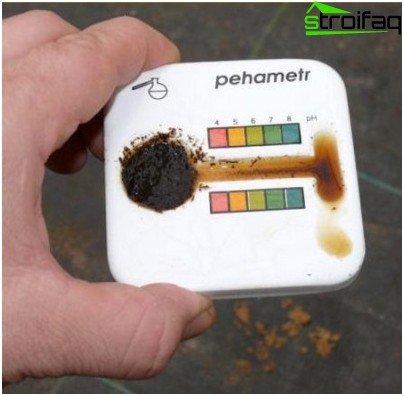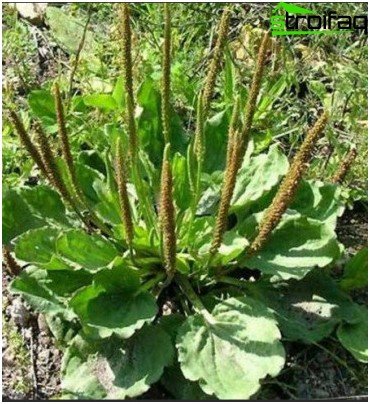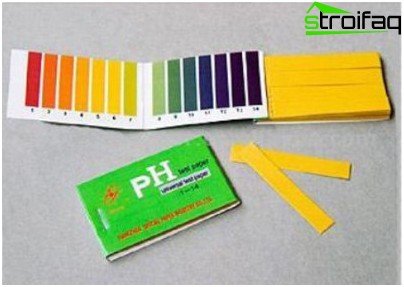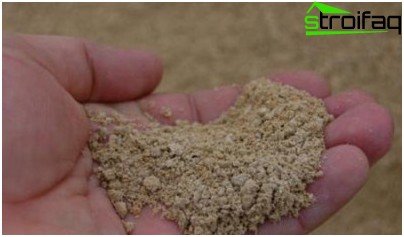Summer residents and owners of private farmsteads annually solve the same problem: they try to preserve the fertility of the land and are fighting stubbornly against the invasion of moles. At first glance, these things are not particularly connected, but the better the composition of the soil, the more useful worms will crawl there. And, accordingly, predators (i.e. moles) will reach for them. Therefore, when liming the soil in order to increase productivity, you need to be prepared that unexpected guests will be added to the site.
Content
- Why liming acidic soils
- Does the earth need liming
- Analysis of cultivated and wild plants in flower beds
- Experiment with Cherry or Currant Leaves
- What means can liming the soil at home
- Folk methods of fighting moles
- Repelling animals for a while: no special costs required
- Tricky fight with the mole in the garden: create an impenetrable shield
Why liming acidic soils
You can often hear that garden crops prefer acidic soils, so why liming. In fact, most plants grow well only on land, where the level of acidity does not exceed 5.5 pH. This is a rather weak percentage, and every year due to the introduction of mineral fertilizers and precipitation with harmful impurities, the land is becoming more acidic. As a result, the summer resident will have to face a number of problems:
- In acidic soil, beneficial microflora dies, which processes organics and humus into a fertilizer absorbed by the roots.
- Acid blocks the release of nutrients from the soil, and the roots cannot absorb them..
- The introduced phosphorus reacts with acid and becomes inaccessible to plants, which means that all feeding will be wasted.
- After melting snows or heavy rains, the acidic earth dries for a long time, and in the heat a solid crust forms on its surface.
- All heavy metals that have accumulated in the soil cannot decompose into safe components and enter the human body with food..
Does the earth need liming
Most accurately determine the level of acidification of the soil in special agrochemical laboratories, but they can only be found in large cities. Most summer residents use simple “grandfathering” methods for analysis, which provide completely reliable information..

There are special devices to help determine the level of soil acidity at home.
Analysis of cultivated and wild plants in flower beds
So, first of all, make a list of all the green “inhabitants” of your site who grow better than others. If conifers, rhododendrons, azaleas, heather (from cultivated plants), as well as wild nettles, horsetail, sorrel, sorrel, whitebird and mosses fall into it, then your land needs liming, because it is too acidified. But, mind you, in those areas where luxurious rhododendrons bloom, soil improvement is not required, because such a composition contributes to the best plant growth. On slightly acidic or neutral lands such weeds such as wheat grass, plantain, coltsfoot, birch develop well.

If plantain thrives in the country – everything is in order with your soil
Experiment with Cherry or Currant Leaves
When the plants are analyzed, take a handful of soil from different points on the plot for a home experiment. Pour boiling water in glass mugs over a couple of pieces of chopped currant or cherry leaves and let them brew. In a slightly cooled infusion, drop a pinch of soil (for each cup the soil from different places) and observe the reaction. If the liquid turns green, then this earth has a neutral acidity level. Blue color indicates slightly acidic soil, red – too acidic, which requires restoration.

Litmus papers show similar results if they are lowered into moist soil.
What means can liming the soil at home
The most popular deoxidation method is liming. To do this, the following compounds are introduced before the autumn or spring digging of the earth.
- Lime fluff. Sold ready-made already slaked. If you could not buy such an option, purchase ordinary building lime. True, it will have to be extinguished first with water or put out for a week under a canopy to absorb moisture from the air and extinguish on its own.
- Lime flour. There are several classes depending on the degree of grinding. Quickly extinguishes acidity with the finest grinding first class flour.
- Drywall. A special kind of lime mined in the pits of dried natural reservoirs. By the rate of deoxidation of the soil, it wins against lime flour.
- Dolomite flour. It extinguishes acid more slowly than all of the above formulations, but has a set of useful trace elements that improve the growth of many garden crops.

In addition to neutralizing acid, dolomite flour introduces an additional complex of useful trace elements into the soil
Folk methods of fighting moles
As soon as your soil normalizes the acid balance, not only bacteria, microorganisms and worms will come to life, but also moles that rush to the site for a delicious treat. They do not pretend to be plants that are planted by a person, but in pursuit of moving food they dig roots and throw mounds of earth out. It is especially unpleasant to see this sight on a perfectly smooth, well-groomed lawn. Therefore, it is necessary to conquer the captured territories from the animals, although the victory does not always remain on the side of the owners. Consider the most effective ways to deal with moles.
Repelling animals for a while: no special costs required
If the mole has already begun its criminal activity on your favorite flower garden or lawn, then you must urgently expel him outside this zone. For this, the “weaknesses” of the animal – a keen sense of smell and hearing – annoy with all kinds of devices. Moles do not like pungent odors and excessive noise, so they will change the schedule in a safer direction. The following tools work most effectively:
- Royal grouse and beans
In these plants, the root system emits a powerful pungent odor that penetrates the soil and irritates the animal. Therefore, the beds on which such “flavorings” are planted, the mole will prefer to get around. For a lawn, landing on the perimeter of marigolds would be a good option. The animal also does not like their smell, and in the autumn you will be able to chop flowers and sprinkle them in the beds, thus disinfecting the soil from pests.

Royal grouse will not only scare away molehills from the plot, but will also create a chic composition on the spring flower garden
- Dug bottles
The fight against moles is successfully carried out using the most common glass empty bottles. They are dug at 2/3 of the height along the perimeter of the bed or plot not directly, but obliquely, trying to position the neck from the side of the often blowing winds. In windy weather, empty containers begin to “sing”, making humming noises. Such a “concert” the mole will not stand.
- Ultrasound scare
Manufacturers of various gadgets, which, apparently, the fight against moles on the site also finished off, invented a useful thing – an ultrasonic repeller. The device resembles a thick pin, which is driven into the ground almost to the head. There are batteries inside the device. They automatically work after a couple of seconds, emitting ultrasonic waves and a squeaking sound around. The squeak is not heard from above, but diverges far enough along the worm moves. The battery lasts about half a season. An even more profitable option is a solar-powered repeller. He himself accumulates energy during daylight hours and converts it into ultrasound. Each manufacturer has its own range of the device, but usually its strength is enough for 10-12 meters, so that the lawn or flower garden can be saved. For the blockade of the entire site put repellers from four extreme points, at the fence.

The solar-powered repeller works without interruption for several seasons in a row
Tricky fight with the mole in the garden: create an impenetrable shield
The most effective fight against moles in the country is the exclusion of the ability to penetrate your garden. They begin the “war” before the appearance of the “enemy”, i.e. while the animal has not yet settled in your territory, but has already been noted by its neighbors. To do this, create a kind of shield in the soil half a meter from slate, poured stones, broken glass or other materials through which the animal is not able to break through. The easiest way to make such a blockade at the time of installation of the fence, deepening the foundation of the fence. But if the site is already fenced, then the shield is placed near the fence.
True, keep in mind that useful earthworms will not fall into your land through a solid barrier. You will have to collect them after the rain in the nearest puddles and bring them to the beds. And you can use the net of rowan as a shield. Its cells are too small for moles to penetrate, but small animals live freely through the barrier. If the fight with moles with your own hands did not end with your victory, many go on to radical measures: they set traps, mole traps and other devices that kill the animal. But since the animal lives on the site with its family, then the molecatcher will need 7-10 pieces, and they all put them at the same time.
It’s bad that some owners start with these methods, although, as a rule, they can deal with moles in humane ways. Then the garden will be saved, and your conscience will be clean.






